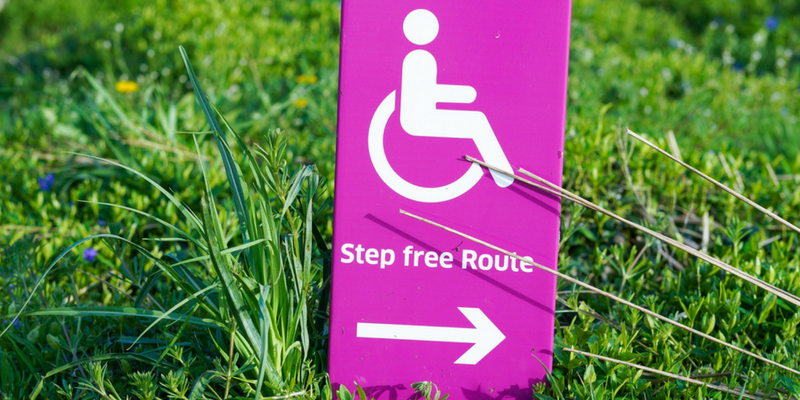Posted On: July 6, 2018 by NARA in: Compliance

The ADA, or Americans with Disabilities Act, is a set of federal laws and regulations that require businesses and other public facilities to provide access and accommodation to disabled customers. These laws pertain to the majority of businesses open to the public regardless of their size or the average number of patrons. Not being ADA compliant can lead to lawsuits and even fines ranging from a few thousand dollars to hundreds of thousands of dollars. Are you confident that your business would pass the test?
For starters, it is important to understand what ADA regulations are all about. This set of laws aims to prohibit the discrimination of any disabled person whether it be for housing, education, employment, or public accommodations. This means that whether someone is buying something from a retail establishment, pumping iron at the gym, or getting their tires rotated, a business must make sure that people with disabilities are able to access the service. It is also important to note that those businesses and facilities existing before the ADA laws were passed are not exempt from compliance.
Accessible Parking
ADA standards require a predetermined amount of handicap accessible parking spaces per total parking spaces available. The rules also state that the accessible route must be in the same area as the general circulation path. This means that the ramps and other paths for pedestrian traffic must be clearly accessible. To determine the number of parking spaces dictated by the ADA, a chart is readily available from the ADA website.
|
Total Number of Parking Spaces Provided in Parking Facility |
Minimum Number of Required Accessible Parking Spaces |
|
1-25 |
1 |
|
26-50 |
2 |
|
51-75 |
3 |
|
76-100 |
4 |
|
101-150 |
5 |
|
151-200 |
6 |
|
201-300 |
7 |
|
301-400 |
8 |
|
401-500 |
9 |
|
501-100 |
2% of total |
|
1001 and over |
20, plus 1 for each 100, or fraction thereof, over 1000 |
Accessible Design
Accessible design means many things. It ranges from regulating aisle width to rules on kitchen and bathroom fixtures. Clear floor space must be a minimum of 30 inches wide and 48 inches deep. Other clearance levels for leg and foot space underneath counters is also mandated. Knee clearance must extend at least 25 inches from the floor and foot clearance must be at least 9 inches tall and 6 inches deep. This allows someone in a wheelchair to easily approach a sink or counter.
Communication Elements
Pretty much anywhere you go you will notice that there is modified signage, typically Braille. From bathroom signs, fire exits, ATMs, and telephones, accessibility compliant signage is everywhere. The ADA also states that the working and Braille lettering for the sign must not be in the picture field. This helps to eliminate confusion and promote communication.
Whether it’s the parking outside or the signs you have indoors, businesses are being held accountable for their accessibility. The ADA laws are detailed rules for everything you need to know about making sure those with disabilities are able to access your business. Be sure to read through the ADA book to make sure your business stays compliant and that you allow all people, regardless of disability, the freedom to access your business.

0 comments